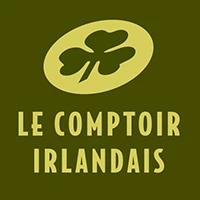the basics of whisky making
    |
Step 1 - Malting First stage in the elaboration of single malt whiskies, malting consists in the transformation of barley in malt. This transformation follows two steps: germination (that releases starch contained in barley) and drying (that stops germination). Step 2 - Mashing Second step of whisky making, starch is soaked into hot water and turns into fermented sugar. The liquid combination of ground malt and pure water is called the mash. Step 3 - Fermentation Sugar is dissolved and drawn off through the bottom during the mashing process. This liquid is called “wort” and fermentation will transform it into “wash”, or alcohol, by adding yeast. Step 4 - Distillation The wash undergoes a heating and condensation process (the liquid resembles malted beer) that releases its alcohol. In the US, whiskey is mainly distilled once. In Scotland, malt whisky is usually double distilled through a pair of pot stills. The first still which is called a wash still, receives the wash produced through the fermentation process and boils it, so as to extract a 20 to 25% alcohol. This alcohol is then redistilled into a second still, the spirit still. Some distilleries undertake a third partial distillation, where residues of the second distillation are reused (as in Auchentoshan). In Ireland, whiskies are usually triple distilled except for Cooley where they undergo only two distillations. |
   |
Casks Casks used for the ageing process differ from country to country. In the US, whisky is aged in new oak barrels and reuse is prohibited by law. Scotland and Ireland use only barrels that have been used at least once for the maturation of another alcohol. A large majority of barrels contained Bourbon, Sherry or Port, more rarely Madeira wine, rum or wine. The barrels may be reused up to three times, and have a great influence of the colour of the whisky. A Bourbon barrel will give a golden coloured whisky, with pale or deep variations depending on the length of the maturation time. A Sherry cask will give deep gold to amber coloured whiskies, sometimes really dark depending on the type of sherry, Fino or Oloroso. Likewise, if a cask has been used several times the whisky colour will only be lighter. There are casks of different sizes. Barrels are exclusively used in the US and are a total capacity of 180 litres. Hogshead is a 250 litres cask essentially re-built with American barrels. The butt is a 500 litres cask originating from Spain, that contained Xeres Amontillado, Fino but essentially Oloroso. Peat In Ireland and Scotland, peat is a thousand-year-old fossil coal exclusively from vegetal origin, and sometimes used to power the kilns used to dry malted barley. The malted barley then reeks of peat. In Scotland, Islay distilleries heavily use peat hence explaining their specific taste. In Ireland, the Connemara is the only peated whisky. Maturation Being the last step of the whisky-making process, it is also the most important one for specialists. Whatever be the country of origin, distilled alcohol has to be aged a minimum time in a cask to gain the “whisk(e)y” appellation. This length depends on producing countries. In Scotland and Ireland, the minimum is 3 years when it is only 2 years in the US. Climate is also affecting maturation, as a dry and warm climate shortens ageing time. During the maturation, a part of the alcohol always evaporates, the so-called “Angels’ share”. The youngest whisky in the blend gives the age of the whisky. For vintage whisky, the age refers to the difference between distillation and bottling. |
| Back to homepage |






